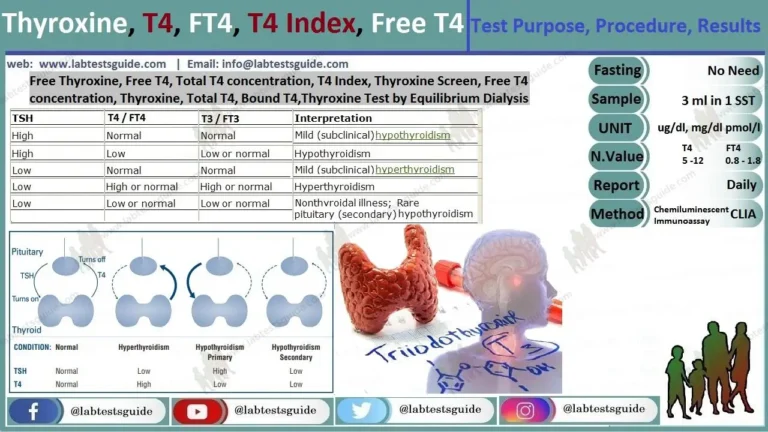Factor X deficiency, also called Stuart-Prower factor deficiency, is a condition caused by not having enough protein known as factor X in the blood. Factor X plays a role in blood clotting, also called coagulation, which helps you stop bleeding. Known as clotting factors, several crucial proteins, including factor X, are involved in helping the blood to clot. If one is missing or not enough, there is a greater chance that it will continue to bleed once it starts.

Also Known as: Coagulation Fators, Factor Assays, Blood Clotting Factors, Clotting Factors, Factor I, Factor II, Factor III,Factor IV, Factor V, Factor VI, Factor VII, Factor VIII, Factor IX, Factor X, Factor XI, Factor XII,Factor XIII
Related Tests: Prothrombin Time (PT), Partial Thromboplastin Time (PTT), Fibrinogen, Activated Partial Thromboplastin Time (APTT)
Why Get Tested:
- To measure the coagulation factor concentration in the blood.
- To find the inherited or acquired bleeding disorders.
- If there is a history of bruises or excessive bleeding.
- If there are prolonged PT or PTT.
- Acquired conditions like Vit. K deficiency or liver disease.
- Maybe advised to monitor the treatment of a patient with factor deficiency.
When to get Tested:
- When you have unexplained or prolonged bleeding
- When you have abnormal coagulation screening tests, such as prothrombin time (PT) or partial thromboplastin time (PTT)
- When you have a family member with a hereditary coagulation factor deficiency
- You may have a test when your healthcare professional wants to control the severity of a factor deficiency and / or the effectiveness of the treatment.
Symptoms of factor X deficiency?
Factor X deficiency can be mild or severe, depending on the amount of protein in the blood.
Symptoms of mild factor X deficiency may include:
- Bruises easily
- Nosebleeds
- Mouth bleeding
- Excessive bleeding during or after trauma or surgery
The most severe cases of the disorder often involve spontaneous episodes of internal and external bleeding. Symptoms may include:
- Joint bleeding
- Muscle bleeding
- Gastrointestinal bleeding
Hematomas (clotted masses of blood that form when a blood vessel breaks) Very serious symptoms that are possible include:
- Spontaneous bleeding in the brain
- Bleeding in the spinal cord
Sample Required:
- The plasma is needed, take 5 ml of venous blood and add sodium citrate as the anticoagulant.
- Perform the assay immediately or as soon as possible.
- For factors II, V, VII, and X, place the citrated plasma on ice immediately, and the sample is stable for 2 hours.
- Freeze if it is delayed >2 hours.
Test Preparation Needed
No need any Preparation for this sample.
List of factors:
The table lists 13 of 20 different coagulation factors involved in the coagulation cascade that are vital to normal blood clotting.
| Coagulation Factor | Other Common Name |
|---|---|
| Factor I | Fibrinogen |
| Facto II | Prothrombin |
| Factor III | Tissue factor or thromboplastin |
| Factor IV | Calcium |
| Factor V | Proaccelerin (Labile factor) |
| Factor VI | Unassigned – old name of Factor Va |
| Factor VII | Proconvertin (Stable factor) |
| Factor VIII | Antihaemophilic factor A, Antihaemophilic globulin |
| Factor IX | Antihaemophilic factor B, Plasma thromboplastin component, Christmas factor |
| Factor X | Stuart-Prower factor |
| Factor XI | Plasma thromboplastin antecedent, Haemophilia C, Rosenthal syndrome |
| Factor XII | Hageman factor |
| Factor XIII | Fibrin stabilising factor, Laki-Lorand factor |
Normal Values:
| Factors | Normal Values |
|---|---|
| Factor I (Fibrinogen) | Adult = 200 to 400 mg/dLNewborn = 125 to 300 mg/dL |
| Factor II (Prothrombin) | 10 to 15 mg/dL |
| Factor III (Thromboplastin) | |
| Factor IV (Ionized calcium) | 4.60 to 5.08 mg/dL |
| Factor V (Labile Factor) | 5 to 10 mg/dL |
| Factor VI | Not existing |
| Factor VII (Stable factor) | 5 to 20 mg/dL |
| Factor VIII (Antihemophilic factor) | 30 mg/dL |
| Factor IX (Christmas factor) | 30 mg/dL |
| Factor X (Stuart factor) | 8 to 10 mg/dL |
| Factor XI (Plasma thromboplastin) | 25 mg/dL |
| Factor XII (Hageman factor) | |
| Factor XIII (Fibrin-stabilizing factor) | |
| Von Willebrand factor |
Diseases Leading To Coagulation Factor Deficiency:
| Disease | Factor deficiency |
|---|---|
| Disseminated intravascular coagulopathy | I, V, VIII |
| Liver diseases | I, II, V, VII, IX, X, XI |
| Autoimmune diseases | VIII |
| Congenital deficiency | I, II, V, VII, VIII, IX, X, XI, XII |
| Vit K deficiency | II, VII, IX, X, XI |
| Heparin therapy | II |
| Warfarin therapy | II, VII, IX, X, XI |
| Fibrinolysis | I, V, VIII |
Possible References Used






